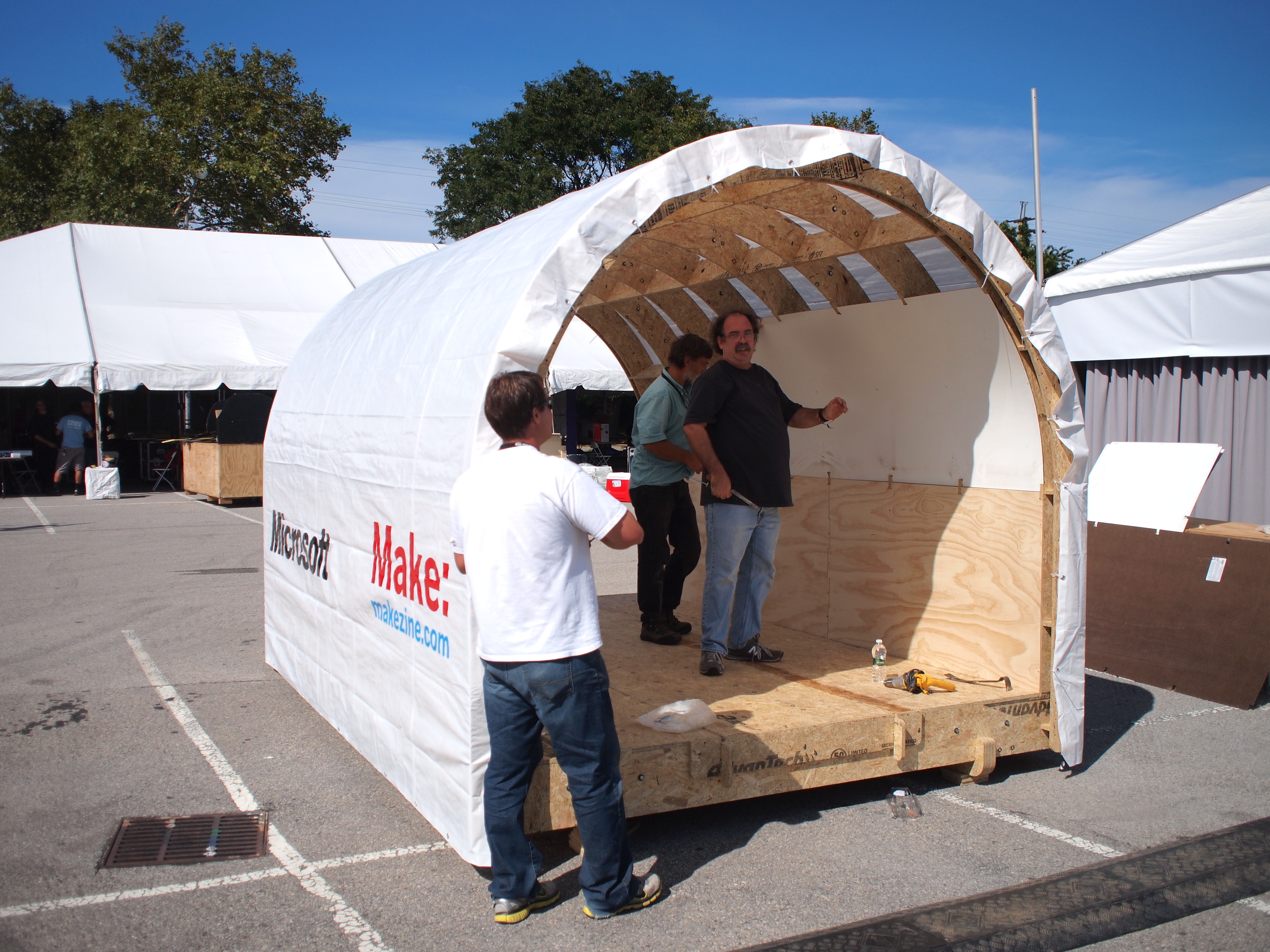Introduction by Dale Dougherty, founder of MAKE
How do we give young people more opportunities to become makers and learn practical skills they can apply to their own creative projects?
The question comes up after each Maker Faire, when I see how young people are inspired by other makers. I know they leave and want to start making things. Could schools offer more opportunities for making things? Could we provide potential makers a physical space to meet — a “makerspace” that can be organized with tools and supplies, so they can work on projects?
At World Maker Faire in New York City, we saw a solution — a simple building called Shelter 2.0 (shelter20.com), designed by Robert Bridges to provide housing in areas hit by disaster. It’s a digitally fabricated shelter, between a house and a tent, that can be put up (and taken down) with simple tools in a matter of hours, even by young makers themselves.
Can we find motivated parents and local makers to create a space and develop programs for local kids, in complete DIY fashion? Imagine a barn-raising of a makerspace in a local community. Nothing could be more in the spirit of making than young makers building their own space.
Developed by Bridges with Bill Young of ShopBot, the standard modular makerspace is 10’×16′ with a barrel-shaped roof covered by canvas or corrugated tin. The plans are available under a Creative Commons license, and as a Google SketchUp model, so you can modify the design and find a local ShopBot user to create the shelter yourself. Or, we can provide the standard components as a package that ships in a 4’×8′ crate. (We’re still exploring different options for manufacturing and shipping.) All the instructions for building a maker- space will be online, along with videos that show you how.
Now, you don’t have to build this particular building. The important thing is to find a DIY way to create a makerspace that young makers can enjoy working and playing in. A space can inspire us to see making as something that takes place at school, but isn’t school. It should be placed near the playground because we want our young makers to have fun and play, while making things.
We can begin a process of open collaboration to define the materials, tools, and other supplies that are needed, and to identify programs and projects that work well for young makers. We can help identify mentors locally and online who can offer safety training, teach about tool use, and provide specialized expertise.
In addition, we can develop awards for participation and achievement to recognize the accomplishments of young makers. Plus, Mini Maker Faires can be used as local fundraisers to provide support for makerspaces and also provide an opportunity for young makers to demonstrate their projects.
Our goal is to build a network of makerspaces around the country (if not the world) and connect them online through http://makerspace.com.



